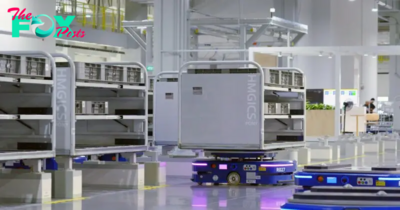Technology
Implications of Autonomous AI Systems for Corporate Fraud
Autonomous AI systems have far-reaching implications across many industries. Corporate fraud detection ranks among the key areas currently being transformed by these technologies. Autonomous AI has a unique ability to analyze huge amounts of data sets at lightning-fast speed. This allows corporations to uncover fraudulent activities that would otherwise go unnoticed. Discussions about AI routinely come with a great degree of skepticism. The capabilities of these systems have many inherent ethical and operational challenges. Organizations should consider the intricacies of autonomous AI systems and evaluate their efficacy vis-a-vis corporate fraud.
How Important is AI in Corporate Fraud Detection?
Autonomous AI systems have upended traditional fraud detection methodologies. They’ve revolutionized fraud detection through machine learning, natural language processing, and neural networks. ML, NLP, and neural network technologies enable AI to detect anomalies across the board, including financial transactions, suspicious conduct, and unusual patterns. Often, human auditors miss these fraudulent activities, but AI can help. NLP is used to analyze textual data, including audit reporting emails. It also identifies potential signs of fraud. This makes it a decisive enhancement in a corporate governance resource kit.
One of the significant strengths of autonomous AI systems is their ability to perform continuous monitoring. This ongoing monitoring process involves constant evaluation of financial transactions and system activities. Put differently, AI systems never sleep, never tire, and are constantly on the lookout for fraudulent activity. More importantly, it can significantly reduce the window of opportunity for unnoticed fraudulent behavior. In other words, criminals don’t have any lead time over IT security consultants. Risks, threats, and anomalies are instantly detected, flared, and shared with security teams. AI systems are adept at identifying complex fraud patterns. They can uncover fraud spanning multiple datasets or platforms – an insuperable task for traditional human auditors.
Application of SAST and DAST in AI Systems for Fraud Detection
The use of AI in corporate fraud detection also underscores the importance of securing AI systems with robust security testing. There are two critical types of security testing available to corporations. These include Static Application Security Testing (SAST) and Dynamic Application Security Testing (DAST). Both play an essential part in maintaining the integrity of AI systems for fraud detection.
- SAST—This testing method evaluates the underlying source code of AI systems. It identifies weaknesses before they are deployed. In the case of fraud detection, SAST strengthens checks and balances on algorithms that monitor transactions to ensure that they’re not susceptible to exploitation. In other words, they check that everything is safe.
- DAST—This testing method is different from SAST. It assesses the AI system in a live environment, simulating real-world attacks and ensuring it responds appropriately. In the context of corporate fraud, DAST helps organizations assess their AI system’s performance should a cybersecurity threat occur.
Corporations can integrate both systems—SAST and DAST—into the AI system’s development lifecycle. This is critical. While SST identifies weaknesses during early development stages, DAST ensures that the deployed AI system is resilient against real-time threats.
Are there Ethical & Security Concerns with Autonomous AI Systems?
There are clear benefits to using autonomous AI systems for detecting corporate fraud. However, there are also ethical and security concerns to consider. The black-box nature of AI systems comes into question. Notably, who makes the decisions regarding the transparency of the AI system? This lack of openness muddies the waters. It makes it difficult for corporate stakeholders and auditors to understand how AI systems arrive at their conclusions.
Once again, this poses challenges in terms of trust and accountability. Bad actors can manipulate AI systems, leading to false identification of fraudulent activities or even exploitation. We must be mindful of data privacy and security. With so much sensitive financial data being managed, there is always a risk of abuse or data breaches. The legal and financial ramifications can be crippling to corporations and individuals.
Closing Remarks
Autonomous AI systems are transforming how corporations detect and prevent fraudulent activity. They offer unprecedented capabilities for real-time monitoring and pattern recognition. Of course, organizations must always be mindful of these systems’ ethical and security challenges. Companies can mitigate these risks by leveraging robust security testing methods such as SAST and DAST. This ensures that AI systems function securely in a corporate environment. The ongoing evolution of AI Technology requires companies to adopt a balanced approach that maximizes AI potential while minimizing attendant risks.
-

 Technology8m ago
Technology8m agoTikTok, PTA host youth safety summit in Pakistan | The Express Tribune
-

 Technology3h ago
Technology3h agoWhy a Technocracy Fails Young People
-

 Technology15h ago
Technology15h agoTransplanting insulin-making cells to treat Type 1 diabetes is challenging − but stem cells offer a potential improvement
-

 Technology16h ago
Technology16h agoJapan's $26 billion deep sea discovery sparks serious environmental concerns | The Express Tribune
-

 Technology20h ago
Technology20h agoShould I worry about mold growing in my home?
-

 Technology20h ago
Technology20h agoBlurry, morphing and surreal – a new AI aesthetic is emerging in film
-

 Technology1d ago
Technology1d agoSpaceX’s Starship advances in spaceflight despite booster landing failure | The Express Tribune
-

 Technology1d ago
Technology1d agoGreat Barrier Reef faces 'significant coral deaths' following recent climate events | The Express Tribune



























